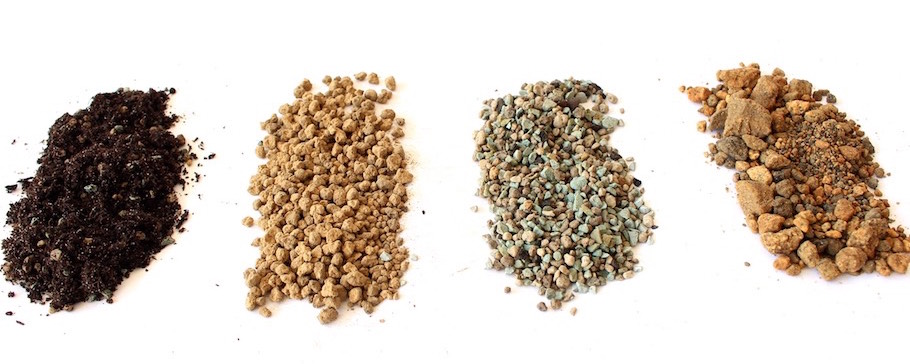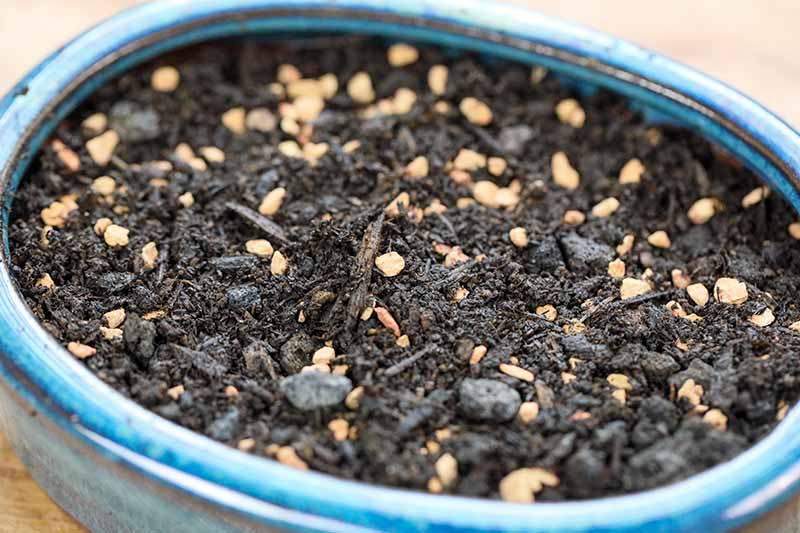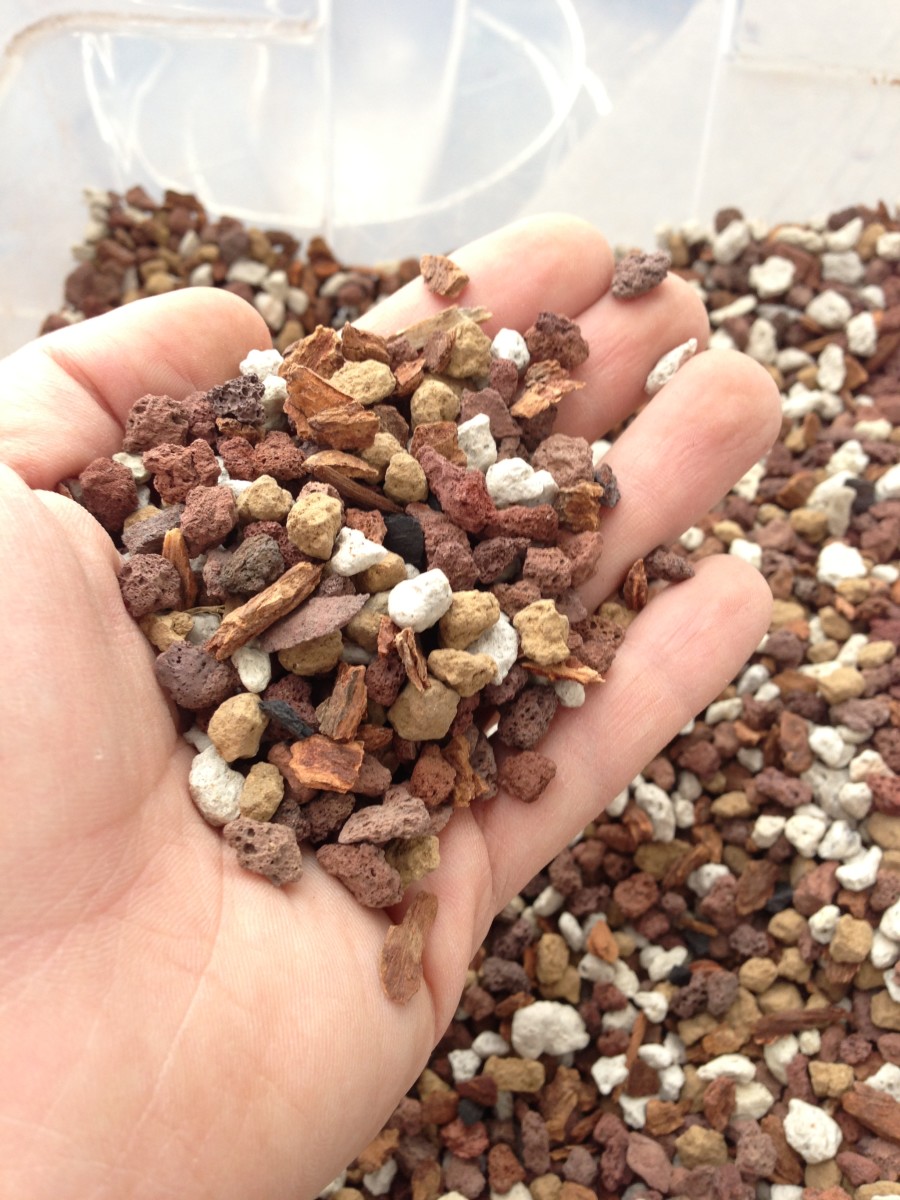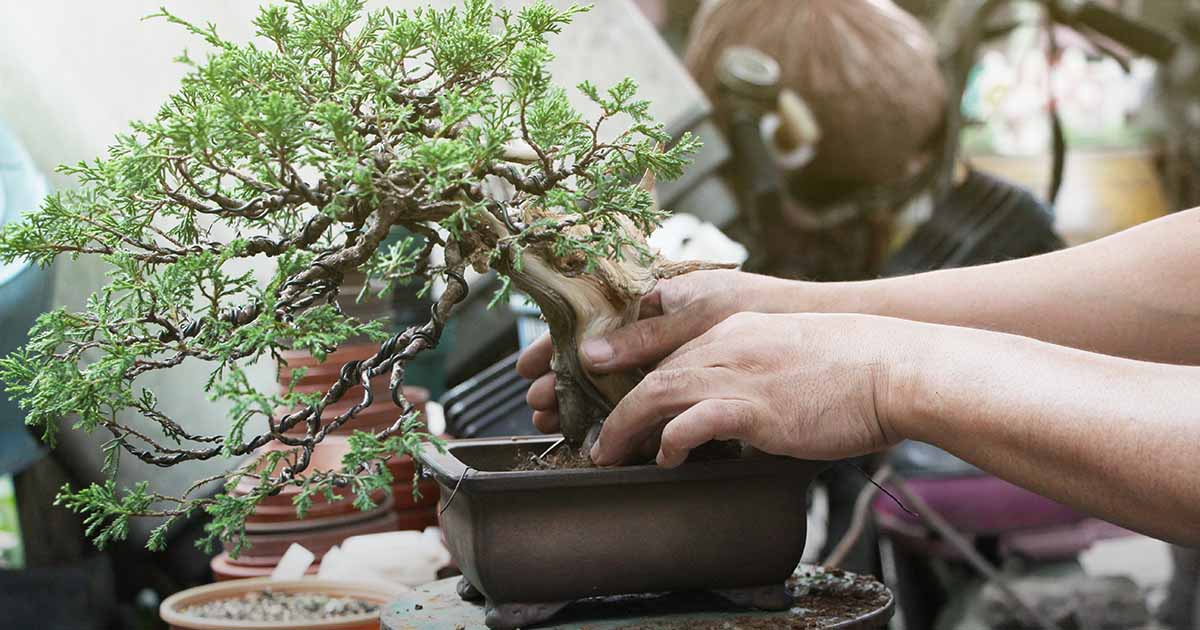The best Side of Akadama bonsai soil
If you have ever been captivated via the artwork of bonsai, you may well be pondering if Distinctive soil is needed to cultivate these miniature masterpieces. The solution is Indeed! Particular soil is important for the health and fitness and vitality of bonsai trees.On this page, we will check out the different types of soil and substrates Employed in bonsai cultivation, which include organic and natural and inorganic choices.
We are going to also find advisable soil mixtures for numerous bonsai species, which include deciduous, coniferous, and indoor kinds. From akadama and pumice to moss and river sand, we'll dive into your interesting planet of bonsai soil and assist you to realize why It can be an important part of cultivating these exquisite trees.

Bonsai soil
What is bonsai soil?
Bonsai soil is a specialized type of soil that is specifically formulated for growing and maintaining bonsai trees. Unlike regular garden soil, bonsai soil is well-draining and provides the necessary nutrients and moisture balance for the tree's root system. The composition of bonsai soil is carefully designed to meet the unique needs of bonsai trees, ensuring their health and longevity.
The importance of bonsai soil
The choice of soil plays a crucial role in the success of your bonsai tree. The right soil provides optimal drainage, allowing excess water to flow freely and preventing root rot. It also promotes a healthy and well-developed root system, which is essential for the overall health and growth of the tree. Bonsai soil retains moisture while allowing air to reach the roots, striking the perfect balance for the tree's needs. Choosing the right bonsai soil is essential for maintaining a healthy and thriving bonsai tree.
Bonsai substrates
What are bonsai substrates?
Bonsai substrates refer to the different materials that can be used to create the ideal soil composition for bonsai trees. These substrates are carefully chosen to meet the specific needs of different species of bonsai trees and to ensure proper water drainage and nutrient availability.
Different types of bonsai substrates
There are various types of bonsai substrates available, each with its own unique characteristics and benefits. Some common bonsai substrates include:
- Organic materials: These include ingredients such as bark, peat moss, and coconut coir. Organic substrates help retain moisture and provide essential nutrients to the bonsai tree.
- Inorganic supplies: These involve parts like pumice, lava rock, and akadama. Inorganic substrates provide great drainage, making certain that excess water would not accumulate throughout the roots from the bonsai tree.
- Soil amendments: These are substances that happen to be added to your soil mixture to boost its Attributes. Examples of soil amendments include things like perlite, vermiculite, and sand. They Enhance the soil's aeration, water-holding ability, and nutrient availability.
By understanding the different sorts of bonsai substrates as well as their properties, it is possible to find the most suitable one particular for your bonsai tree's wants.
Natural and organic or Inorganic Soils
Organic soils for bonsai
Organic soils for bonsai are composed of normal resources including bark, peat moss, coconut coir, and compost. These products give a abundant supply of nutrients with the bonsai tree and promote healthful root growth. Natural and organic soils also have excellent drinking water retention Qualities, guaranteeing which the tree gets adequate humidity among watering classes. However, it is vital to notice that natural and organic soils may possibly break down as time passes and grow to be compacted, resulting in very poor drainage and possible root difficulties.
Inorganic soils for bonsai
Inorganic soils for bonsai encompass elements like pumice, lava rock, akadama, and soil amendments like perlite or vermiculite. These elements have outstanding drainage properties, stopping waterlogged soil and advertising aeration throughout the roots. Inorganic soils are chosen by numerous bonsai fanatics because of their longevity and ability to deliver a stable natural environment for the bonsai tree's root method. However, They could have to have much more Recurrent watering and additional fertilization, as they don't keep as much humidity or nutrients as natural soils.
Advantages and drawbacks of making use of natural and organic and inorganic soils for bonsai
Selecting involving organic and inorganic soils on your bonsai tree relies on a variety of aspects, such as the particular species of tree, your weather, and private preferences. Allow me to share the benefits and drawbacks of each:
Natural and organic soils:
- Execs: Offer nutrients, good h2o retention, encourage balanced root advancement.
- Negatives: May break down eventually, opportunity for bad drainage Otherwise properly managed.
Inorganic soils:
- Pros: Superb drainage, very long-lasting, stable setting for roots.
- Negatives: Fewer h2o retention, may perhaps have to have additional frequent watering and fertilization.
By contemplating the benefits and drawbacks of the two organic and natural and inorganic soils, you can make an informed selection according to the particular desires of your bonsai tree.
Soil factors
Essential parts of bonsai soil
Bonsai soil is usually composed of 3 primary components: grit, natural and organic make a difference, and clay. These elements perform collectively to create the ideal soil composition with the bonsai tree's root technique.
- Grit: Grit, such as sand or perlite, provides drainage and aeration inside the soil. It helps stop waterlogging and will allow air to reach the roots.
- Organic and natural issue: Organic and natural matter, for example compost or bark, offers nutrients on the bonsai tree. What's more, it assists retain moisture and Increase the soil's Total framework.
- Clay: Clay particles deliver some water retention attributes and support bind the soil jointly. However, excessive clay can lead to very poor drainage and compaction.
Position of every soil component
Each soil element plays a vital role in developing a effectively-well balanced and healthful setting with the bonsai tree's roots.
- Grit: Grit gives the mandatory drainage and aeration from the soil. It stops the roots from sitting in stagnant drinking water, cutting down the chance of root rot and advertising Total root health.
- Organic make any difference: Natural make a difference offers vital nutrients towards the bonsai tree. It aids in humidity retention and contributes to the general framework on the soil.
- Clay: Clay particles enable bind the soil with each other and supply some water retention capacity. Having said that, it is important to harmony the quantity of clay to prevent problems like very poor drainage and compaction.
By comprehending the roles of every soil part, you can produce a balanced bonsai soil combine that meets the specific demands of your respective tree.

Recommended Bonsai soil mixtures
Common bonsai soil mixtures
There are several common bonsai soil mixtures that have been proven effective for various types of bonsai trees. These mixtures typically consist of a combination of inorganic substrates, organic matter, and soil amendments.
Some of the commonly used bonsai soil mixtures include:
- Akadama, pumice, and lava rock: This mixture is popular among bonsai enthusiasts for its excellent drainage and water retention properties.
- Akadama, lava rock, and natural make any difference: This mixture combines the advantages of inorganic substrates With all the nutrient-wealthy Attributes of natural matter.
- Pumice, perlite, and bark: This mixture supplies good drainage and aeration even though retaining some moisture and furnishing nutrients.
These are generally just some examples of bonsai soil mixtures, and The perfect mixture will depend on the particular needs within your bonsai tree as well as your weather.
Factors to take into consideration when selecting a bonsai soil mixture
When deciding on a bonsai soil combination, it's important to contemplate the next components:
- Species of bonsai tree: Different species have various dampness and nutrient prerequisites. Study the specific wants of your respective tree to pick out a soil mixture that fulfills its demands.
- Weather: The local climate you reside in can have an affect on the humidity retention Attributes of the soil. Think about the common humidity and temperature close to you when choosing a soil mixture.
- Watering routines: Your personal watering routines and schedule must align Together with the soil mixture you select. Some mixtures demand a lot more Regular watering, while others retain humidity for extended intervals.
- Budget: Some soil parts might be more expensive than others. Consider your budget when selecting a soil combination.
By getting these variables into consideration, you are able to select a bonsai soil combination that gives the most effective expanding circumstances for your tree.
Deciduous Bonsai soil
Most effective soil composition for deciduous bonsai
Deciduous bonsai trees, for instance maple or birch, have certain soil specifications to support their advancement and overall health. The most effective soil composition for deciduous bonsai normally includes a combination of natural matter, inorganic substrates, and soil amendments.
A proposed soil composition for deciduous bonsai may possibly consist of:
- Akadama: Delivers excellent water retention when enabling for drainage. It also releases nutrients bit by bit with time.
- Pumice: Encourages aeration and drainage while in the soil, preventing waterlogging.
- Bark or peat moss: Provides organic subject to the soil, giving nutrients and dampness retention.
This soil composition makes certain that the roots of deciduous bonsai trees receive the appropriate harmony of dampness, nutrients, and oxygen for optimal progress.

Coniferous and Pine soil
Ideal soil mixture for coniferous and pine bonsai
Coniferous and pine bonsai trees have specific soil requirements due to their water retention needs and preference for acidic soil. An ideal soil mixture for coniferous and pine bonsai should provide good drainage while retaining moisture and maintaining the desired pH level.
A recommended soil mixture for coniferous and pine bonsai may include:
- Akadama: Provides excellent water retention while allowing for sufficient drainage. It releases nutrients slowly over time.
- Pumice: Promotes aeration and drainage while in the soil, preventing waterlogged roots.
- Peat moss: Adds natural and organic make a difference and acidity into the soil, making a really perfect pH level for coniferous and pine trees.
This soil mixture makes sure that the roots of coniferous and pine bonsai trees acquire the correct harmony of humidity, nutrients, and acidity for their distinct needs.
Akadama
Precisely what is akadama?
Akadama is really a variety of clay soil which is commonly Employed in bonsai cultivation. It's recognized for its superb drinking water retention more info Houses, which make certain a steady supply of moisture on the bonsai tree's roots. Akadama can also be prized for its power to release nutrients little by little after a while, furnishing a constant source of nourishment for your tree.
Advantages of making use of akadama in bonsai soil
Applying akadama in bonsai soil gives several Added benefits:
- H2o retention: Akadama has exceptional water retention Homes, making it possible for it to carry humidity with out turning into waterlogged. This makes sure that the bonsai tree's roots receive a regular provide of water, marketing healthier progress.
- Nutrient release: Akadama little by little releases nutrients to the soil after a while, delivering a reliable supply of nourishment for that bonsai tree. This lowers the need for Regular fertilization and assists preserve a balanced nutrient profile.
- Aeration: Despite its h2o retention abilities, akadama also supplies adequate aeration on the bonsai tree's roots. It lets air to get to the root process, stopping challenges which include root rot on account of lack of oxygen.
By incorporating akadama into the bonsai soil, you are able to create an optimal increasing natural environment on your tree, making sure its wellness and vitality.

Lava rock
How lava rock benefits bonsai soil
Lava rock is a popular component in bonsai soil mixtures due to its excellent drainage and aeration properties. It is typically used in conjunction with other substrates to create the ideal soil composition for bonsai trees.
The benefits of lava rock in bonsai soil include:
- Drainage: Lava rock provides excellent drainage, preventing waterlogging and ensuring that excess water flows freely through the soil. This helps prevent root rot and provides a healthy environment for the roots to thrive.
- Aeration: The porous nature of lava rock allows air to flow into inside the soil, providing oxygen for the bonsai tree's root method. Correct aeration is essential for healthier root enhancement and In general tree expansion.
- Longevity: Lava rock can be a tough product that does not stop working simply. This makes certain that the soil structure remains secure after a while, decreasing the necessity for frequent soil replacements.
Lava rock is out there in numerous dimensions and designs, allowing for personalization based upon the precise wants of the bonsai tree and soil requirements.
Different types of lava rock
You will discover different types of lava rock that could be used in bonsai soil mixtures, which include:
- Black lava rock: Black lava rock is really a normally used content in bonsai soil mixtures. It offers superb drainage properties and adds an aesthetic factor to the overall presentation of your bonsai tree.
- Red lava rock: Purple lava rock is yet another well known choice in bonsai soil mixtures. It provides very similar drainage and aeration Added benefits as black lava rock but has a definite reddish shade that provides Visible desire for the container.
Both black and red lava rocks are commonly out there and might be quickly incorporated into your bonsai soil mixture.
Potting
Necessary guidelines for effective bonsai potting
Potting is really a essential approach in bonsai cultivation, mainly because it straight impacts the wellness and improvement with the tree's roots. Here are several vital tips for successful bonsai potting:
- Select the appropriate pot measurement: Select a bonsai pot that allows for root expansion although however giving a snug match. Prevent pots which are much too substantial, since they can cause extreme soil moisture and very poor root development.
- Use bonsai wire: Protected the tree while in the pot utilizing bonsai wire to be sure stability. This helps prevent the tree from shifting or turning into uprooted throughout watering or solid winds.
- Trim and spread the roots: Just before potting the bonsai tree, very carefully trim and spread out the roots. This encourages outward growth and helps prevent root tangling or root-bound troubles.
- Add mesh screens: Position mesh screens more than the drainage holes at The underside on the pot to avoid soil erosion and assure appropriate drainage.
- Use clean bonsai soil: When potting, generally use fresh bonsai soil to offer the required nutrients and optimal growing circumstances to the roots.
By next these necessary tips, it is possible to make sure An effective potting approach and promote the general health and development of your respective bonsai tree.
The function of bonsai pots in soil dampness Manage
Bonsai pots play a crucial part in soil moisture Handle, specifically impacting the wellbeing and advancement with the tree. Bonsai pots are generally shallow and have drainage holes, allowing excessive h2o to escape and preventing the soil from starting to be waterlogged.
The design of bonsai pots encourages evaporation and air circulation, which allows regulate soil humidity stages. The shallow depth and wide opening with the pot expose much more area location of your soil on the air, aiding in humidity evaporation. This prevents the roots from sitting down in excessively wet soil, cutting down the risk of root rot and also other water-linked challenges.
Furthermore, the drainage holes in bonsai pots allow for any extra h2o to escape, protecting against waterlogged soil and advertising aeration around the roots. Right aeration is essential for the overall health and development of the basis process, ensuring the bonsai tree receives the required oxygen for expansion.
By using bonsai pots made for productive humidity Manage, you may build a favorable surroundings in your bonsai tree's roots and market its All round wellbeing and vitality.
In summary, deciding on the right bonsai soil is vital for your accomplishment and well being of the bonsai tree. Knowledge the differing types of bonsai substrates, the function of natural and inorganic soils, The main element parts of bonsai soil, and the varied proposed soil mixtures will website help you offer the optimal expanding circumstances to your bonsai tree. No matter whether you do have a deciduous or coniferous bonsai, incorporating resources like akadama and lava rock can enrich the soil's drainage and nutrient availability. Also, listening to potting approaches and employing bonsai pots made for moisture Manage will additional support the flourishing expansion of the bonsai tree. With appropriate knowing and implementation of bonsai soil methods, you are able to take pleasure in the natural beauty and artistry of bonsai cultivation for years to return.
